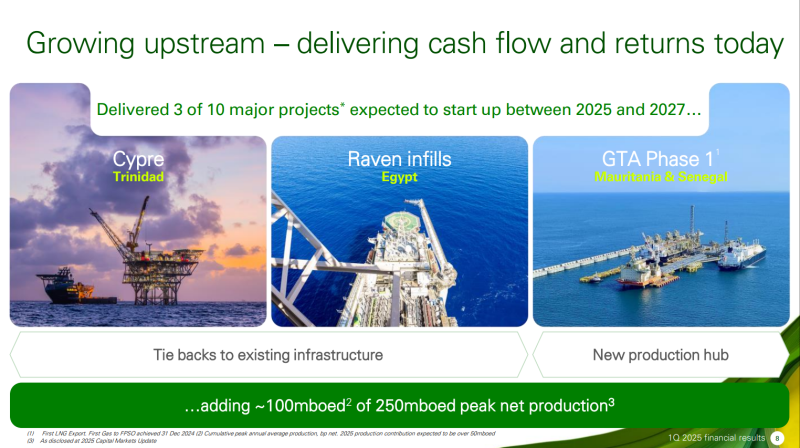After enduring financial struggles to start the year, including a 48% drop in net profit, BP is making some changes, the company announced in its first-quarter earnings call.
A significant change for the British supermajor is the ousting of Executive Vice President of Strategy, Sustainability, and Ventures, Giulia Chierchia, who will step down on 1 June and will not be replaced.
Her departure comes after the company underwent a strategic reset in February which saw the company cut green spending and pivot back to oil amid investor pressure.
BP’s financial struggles have made it a target for activist hedge fund Elliott Investment Management, known for amassing stakes in struggling companies and agitating for changes that could increase market value. Elliot has built a 5% stake in BP (making it the second-largest shareholder) and has reportedly called on the oil company to turn away from its green agenda, tighten its financial discipline, and overhaul its board.
Since BP abandoned its green strategy in favor of an increased focus on traditional oil and gas, Chierchia and BP Chairman Helge Lund faced questions over their future. Lund is expected to leave the company in 2026 after announcing in April that he would step down.
The company’s profits dropped by almost 50% in the first 3 months of 2025, falling to $1.4 billion from $2.7 billion during the same period last year. the supermajor generated $2.7 billion in profits.
The decline follows a disappointing start to the year, after the company’s annual profits dropped by a third in 2024 to $8.9 billion, sending its shares down more than 4%.
BP CEO Murray Auchincloss said, “Following the introduction of global tariffs, and related government responses, there has been increased market volatility driven by rising concerns around the potential impact of a weaker economic outlook. Commodity prices have softened as the market anticipates a potential reduction in demand for oil and gas, driven by economic uncertainty.”
Amid an industrywide fall in refining profitability, BP's refining margins averaged $15.20/bbl in the first quarter, down from $20.60 a year earlier.
“The gas and low-carbon energy underlying financial result was $1 billion lower than the previous quarter that largely reflect a weak gas marketing and trading result, lower production including the impact of divestments, and higher costs, mainly non-cash costs but in addition a level of ramp-up costs related to starting up major projects,” Kate Thomson, chief financial officer of BP, said during the earnings call. “In oil production and operations, the underlying result was broadly flat compared to the previous quarter.”
Profit at its gas and low-carbon unit was down around 40%, while its customers and products business was down by around 47%. BP also said it expects to conduct a heavy refinery maintenance program in the second quarter, which likely means lower output.
Under pressure to improve profitability and cut costs Auchincloss has announced plans to sell $20 billion of assets through to 2027 and to reduce spending and share buybacks.
Yet even with some frustrating financial struggles, “[First quarter] delivery was strong, with great quarterly operational performance across the businesses,” Auchincloss said during the earnings call.
“We delivered strong operational performance in the quarter with above 96% refining availability—the highest first-quarter figure in 24 years. Upstream operating efficiency is at an all-time record, supported by plant reliability above 95%,” he said.

In an effort to continue to grow upstream, BP expects to start up 10 major projects between 2025 and 2027.
“I’m pleased to say that 2025 is off to a great start, with three of these projects now safely started up, delivering production and generating cash flow and returns. The first phase of Cypre, a four-well subsea development in Trinidad, is complete. The second phase, later this year, will add a further three wells,” Auchincloss said.
BP also exported the first LNG shipment from the GTA phase 1 project in Mauritania and Senegal, which is expected to produce 2.4 mtpa of LNG once fully commissioned. In addition to GTA, BP’s Raven infills project in Egypt came online ahead of schedule. The combined peak net production of these three projects is around 100,000 BOE/D, with 50,000 bbl coming in 2025.
“We plan to drill around 40 wells as part of our exploration program over the next 3 years," Auchincloss continued. "Many of these can be tied back to fill existing infrastructure, making cycle time to startup much shorter. And, we are excited about the recent announcement regarding a significant discovery in Namibia’s Orange Basin through our joint venture, Azule Energy."
BP increased its outlook for asset sales in 2025 to $3 to $4 billion from $3 billion previously. It also cut its spending outlook for this year by $500 million to $14.5 billion and reiterated its $13 to $15 billion target for 2026 and 2027.
“We expect upstream production to be broadly flat compared to the first quarter. In customers, we expect seasonally higher volumes compared to the first quarter and fuels margins to remain sensitive to movements in the cost of supply," said Thomson. "In products, we expect a significantly higher level of planned refinery turnaround activity compared to the first quarter and refining margins to remain sensitive to the economic outlook.”


